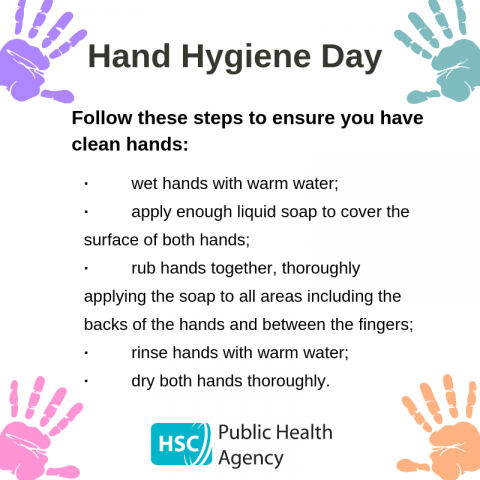Save lives: clean your hands

Each year, millions of infections are prevented through ensuring good hand hygiene. So today, ahead of the World Health Organization’s Global Hand Hygiene Day (5 May), the Public Health Agency (PHA) is reminding everyone of the need to ‘clean your hands’ thoroughly and regularly.
The theme for Hand Hygiene Day is ‘Clean care for all – it’s in your hands’.
Caroline McGeary, Senior Infection Prevention and Control Nurse at the PHA, said: “Hand hygiene is the most important method of preventing and controlling the spread of infections. It can help protect us and our families from unpleasant, and, in some cases, life-threatening infections and other illnesses such as food poisoning and seasonal flu.”
By following the steps below, everyone can ensure they have clean hands:
- wet hands with warm water;
- apply enough liquid soap to cover the surface of both hands;
- rub hands together, thoroughly applying the soap to all areas including the backs of the hands and between the fingers;
- rinse hands with warm water;
- dry both hands thoroughly.
It is important to remember that anti-bacterial gels and wipes are generally not a substitute for washing hands with liquid soap and warm water as they may not be able to remove contamination (bugs and germs) in an effective way. However, gels and wipes may be useful as a short-term measure if hand-washing facilities are not readily available.
Caroline continued: “Clean hands are also vital in controlling the spread of healthcare associated infections, including new and emerging multi-resistant infections. The PHA continues to work in partnership with all healthcare organisations to promote excellence in hand hygiene across all health and social care settings and prevent the spread of antimicrobial resistance.
“It is the collective responsibility of everyone – healthcare workers and the general public – to be proactive in preventing the spread of infection. I would urge everyone to follow good hand hygiene practices, whether in a healthcare setting, in the home or when participating in leisure or sporting activities.”
